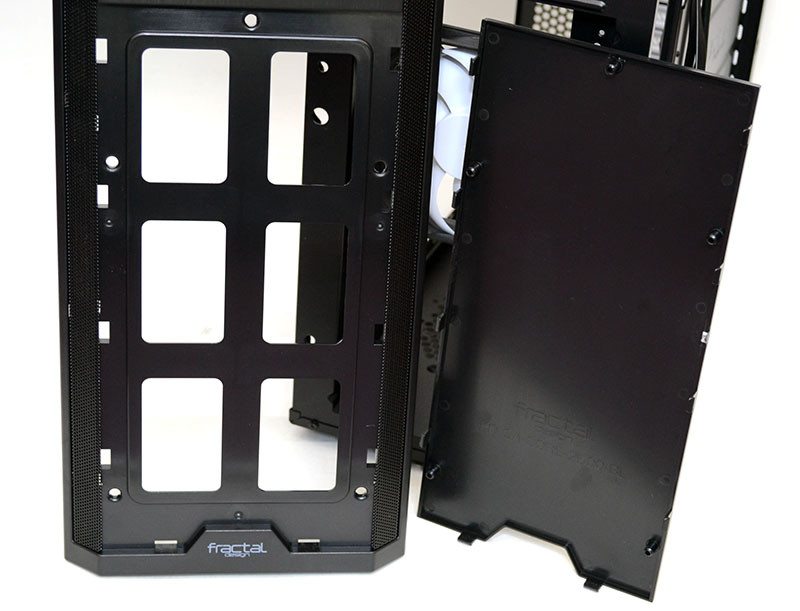Fractal Design Core 2300 Mid-Tower Chassis Review
Peter Donnell / 10 years ago
Interior
With the side panel removed, the interior is noticeably more interesting than the exterior and there’s a lot of cool features to be found. Behind the motherboard, you’ll find a huge CPU cooler mounting cut-out, with a few extra cut-outs around the edges for cable routing.
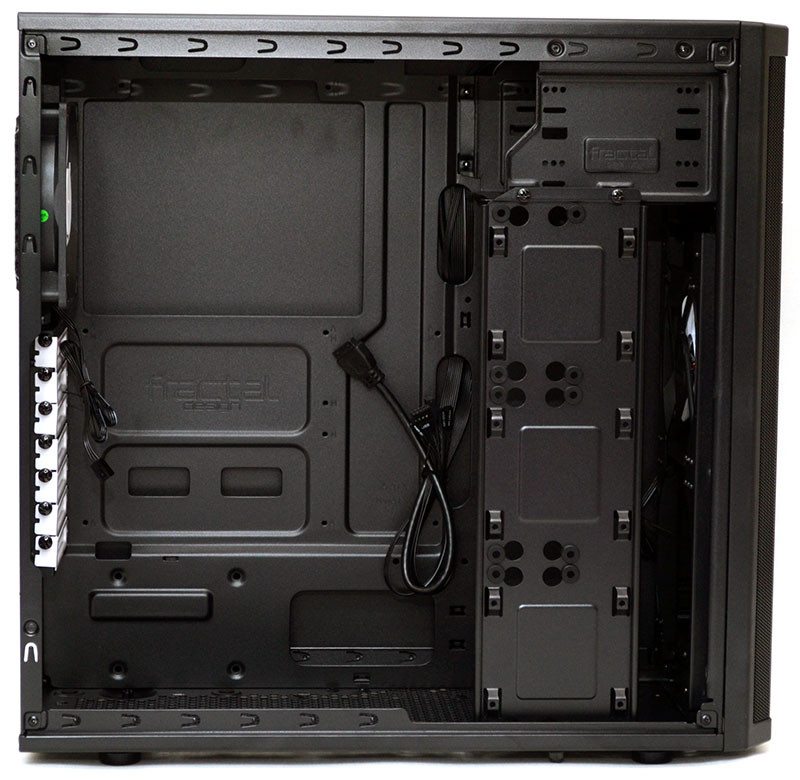
There’s plenty of space in the top for extra cooling fans or a slim radiator, no doubt ideal for AIO solutions.
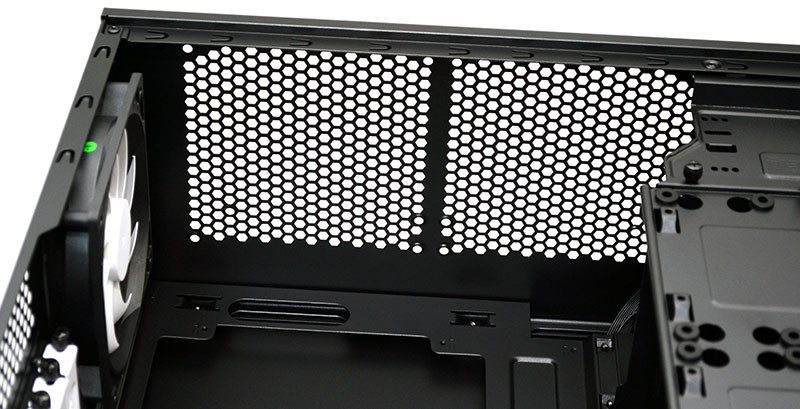
The base of the chassis has four rubber pads for the PSU to mount on, as well as screw holes to mount additional cooling.
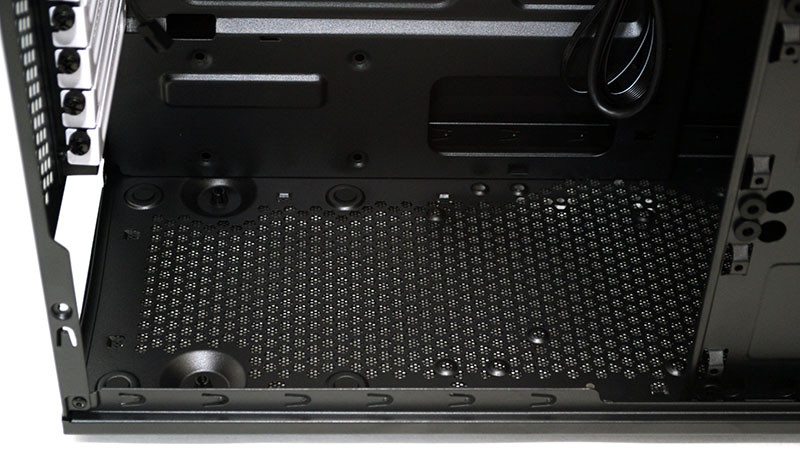
The front of the chassis is kept clear, which is great news for those with super-long graphics cards and intentions of adding water cooling radiators behind the front panel. This is achieved by using this funky vertical hard drive bracket.
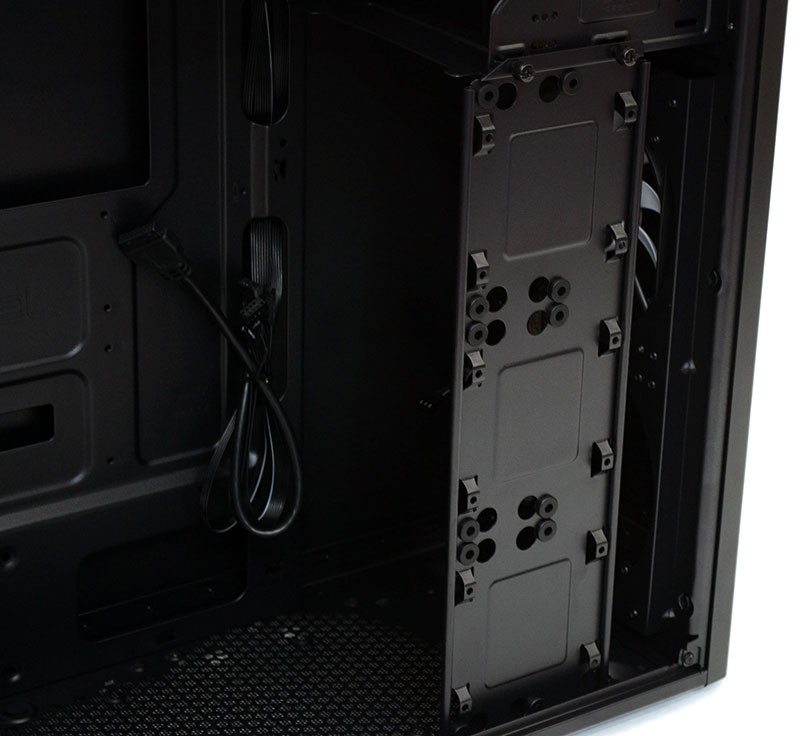
The bracket is held in place by three thumb screws, two here, one more on the base of the chassis. Removing it means you can easily install your hard drives, then pop the bracket back into the chassis. Removing it also makes it incredibly easy to work inside the chassis while installing other components.
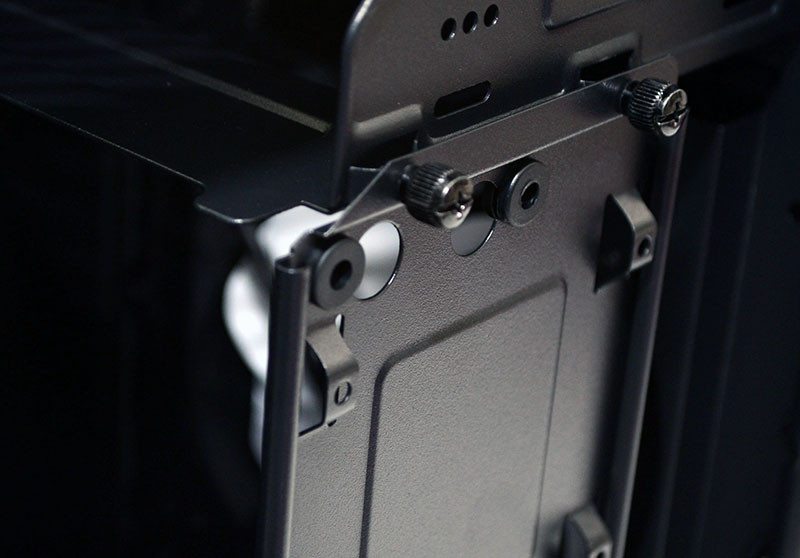
There’s a single 120mm fan pre-installed in the front of the chassis, with mounting options for 2 x 120/140mm or similar size radiators.
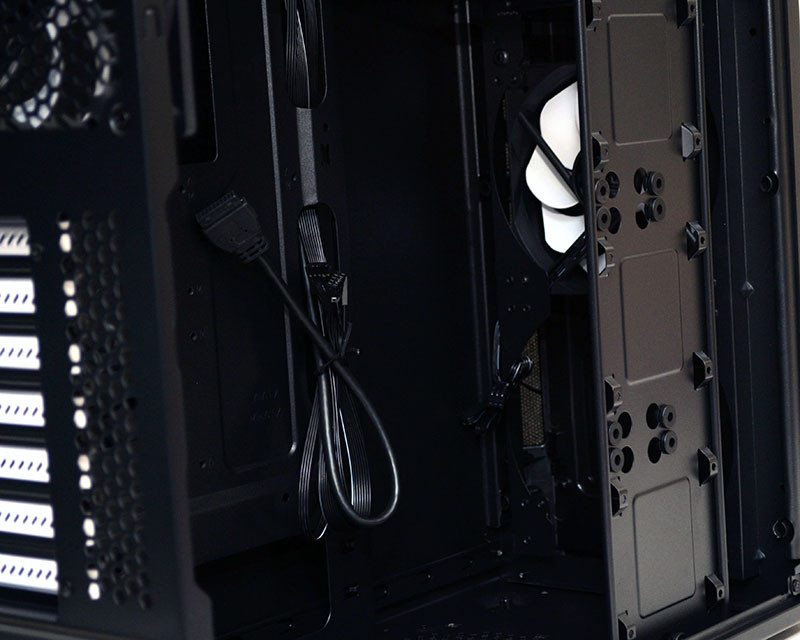
Another 120mm fan pre-installed in the back. All included fans are of a good quality and come with standard 3-pin headers.
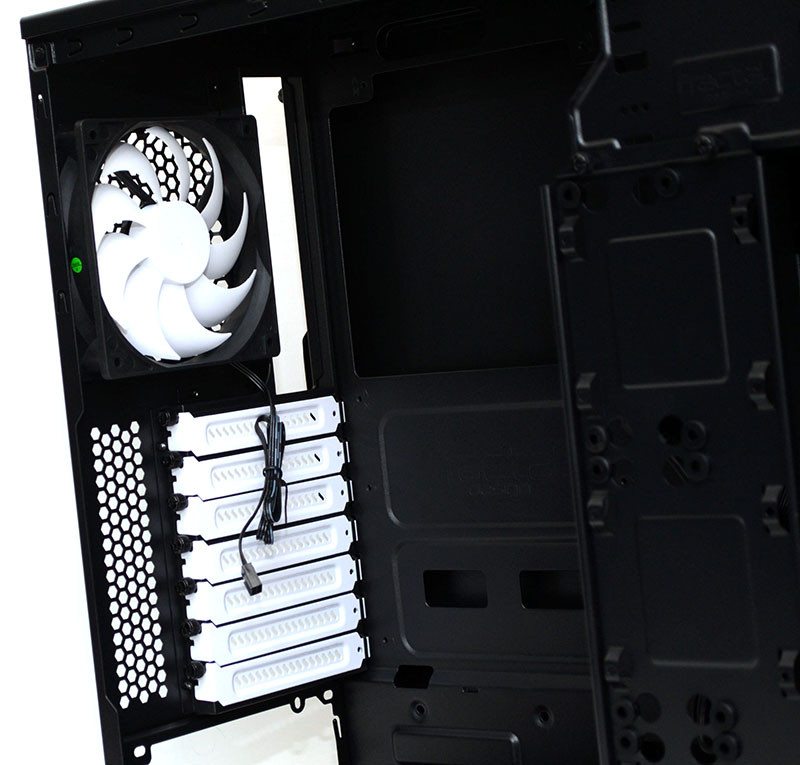
The PSU can be mounted normal or inverted, and there’s four small rubber pads to provide a good fit and help prevent vibrations.
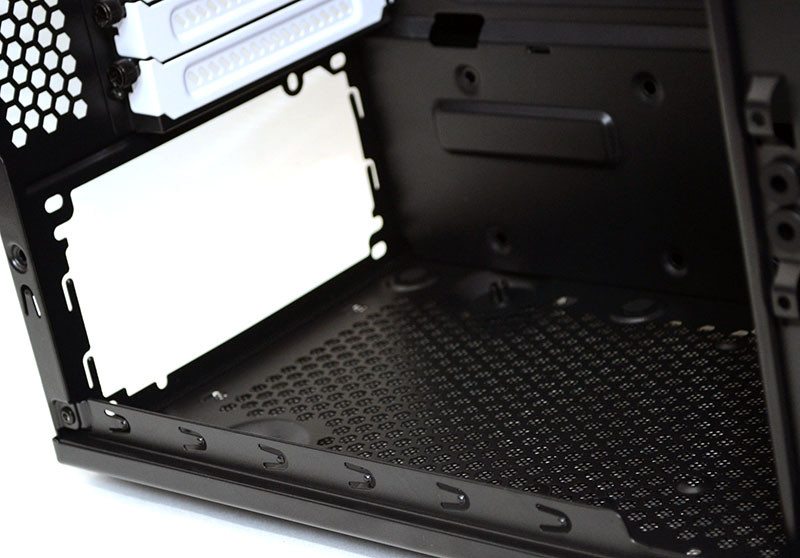
Behind the motherboard, you’ll find a reasonable amount of space for excess cables as well as a range of routing holes to help with cable management.
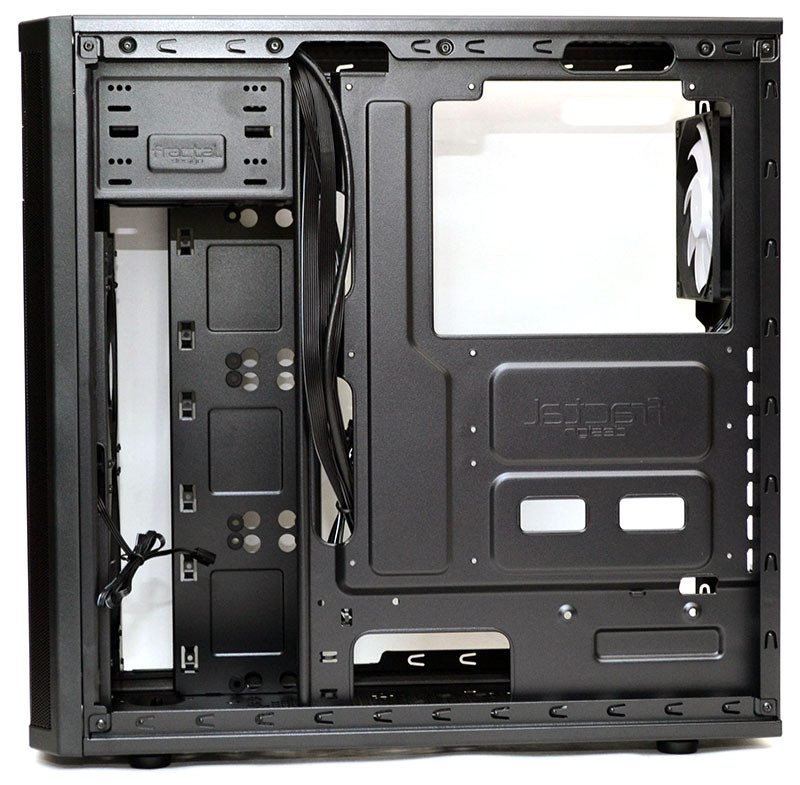
There’s two extra routing holes at the top of the motherboard, which are perfect for routing motherboard and fan cables.
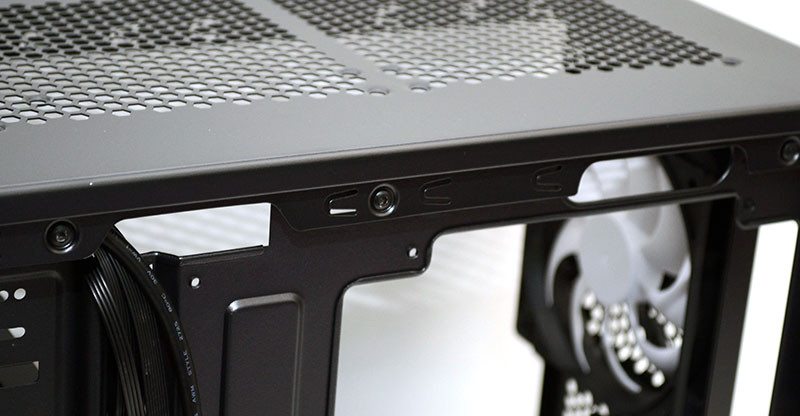
There’s no rubber grommets on the routing holes, but since this chassis has no side panel window, little esthetic touches like that aren’t as important. However, all routing holes have smooth rounded edges, so there’s no chance of your cables getting snagged.
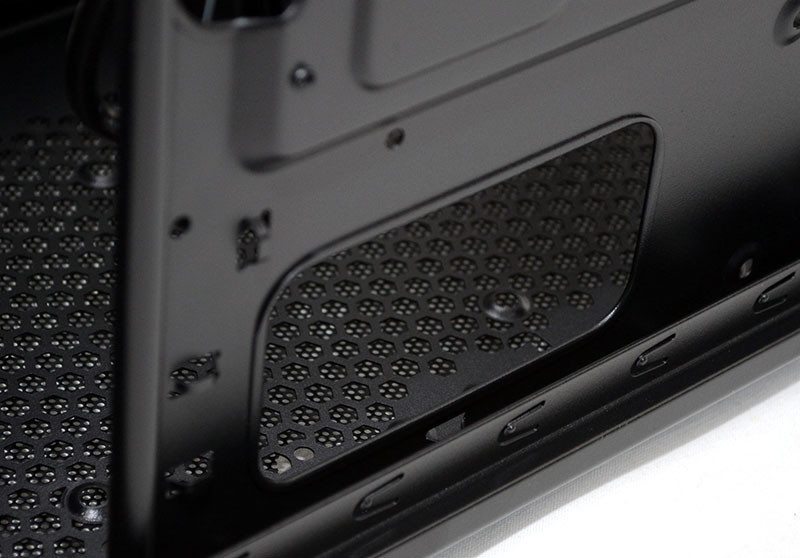
The front panel can be popped off easily enough, giving you better access to the front fan mounts.
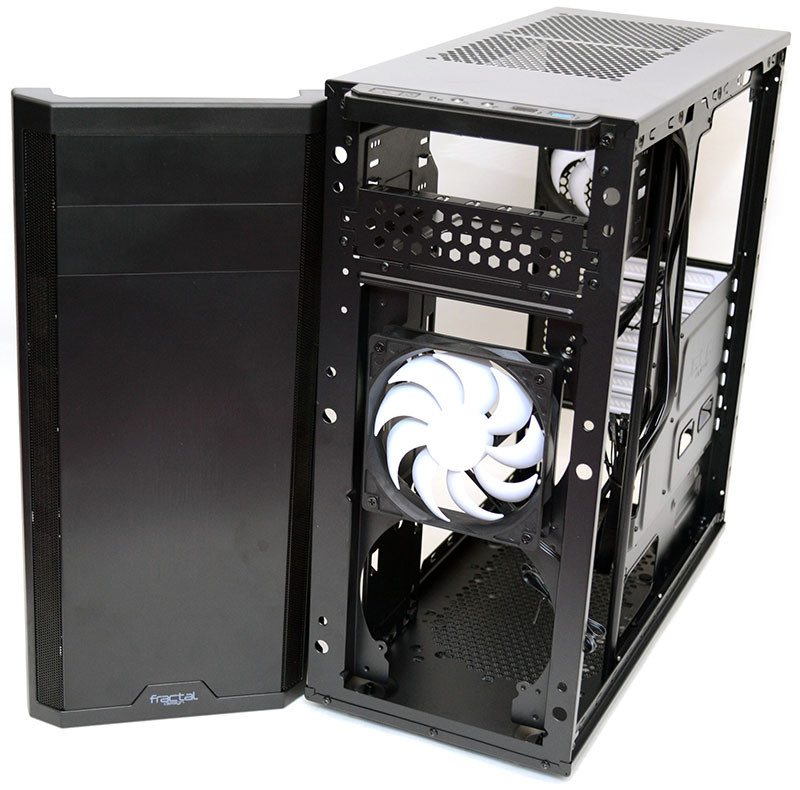
Interestingly, the front panel cover also pops out, not sure why, perhaps something to do with the manufacturing process, but it could come in handy for those planning to mod their chassis.
